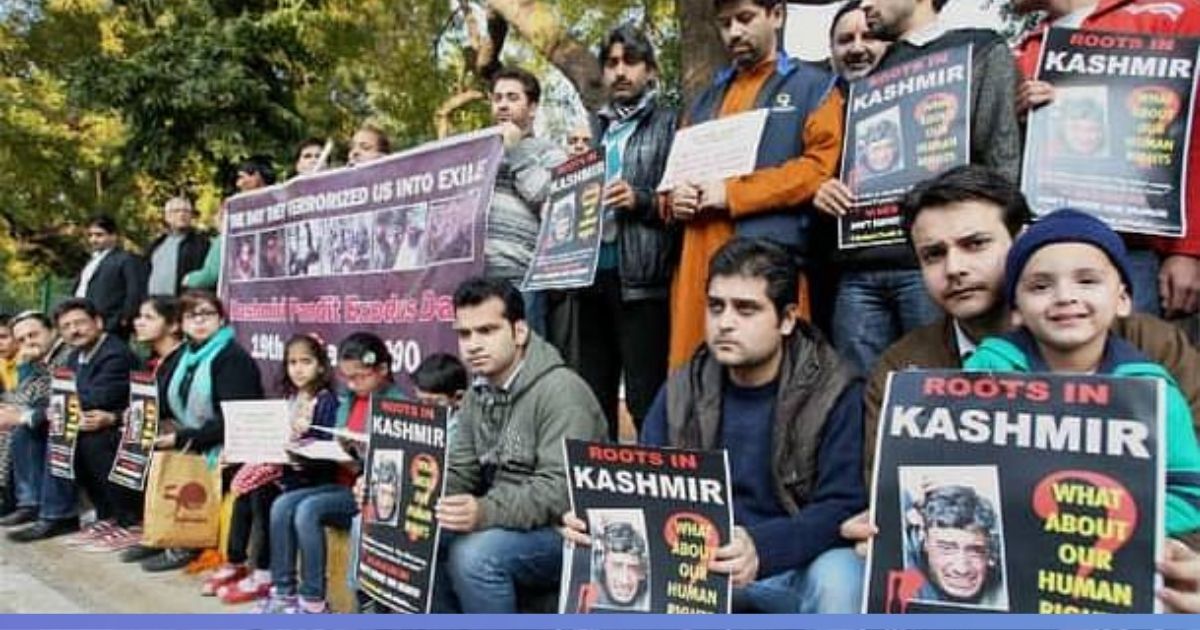[ad_1]
Every year December 18th is celebrated as International Migrants Day. The day recognizes the importance of protecting the rights and dignity of migrants around the world. People often leave their homeland voluntarily or by force. There are certain factors that cause people to migrate from one place to another, such as economic challenges, the frequency of disasters, extreme poverty or due to conflict.
Likewise, 31 years ago in 1990, thousands of Hindus living in Kashmir were exiled and lived like refugees in their own country for many years.
Rise of the insurrection
As early as July 1988, a militant separatist organization Jammu Kashmir Liberation Front (JKLF) started a separatist uprising for the independence of Kashmir from India. On September 14, 1989, a prominent Kashmiri Hindu, namely Tika Lal Taploo, was attacked for the first time in Jammu & Kashmir. This sparked a sense of fear in the community as Taploo’s killers were never found. The Hindus felt unsafe in the Kashmir Valley and feared that they would be attacked at any time.
To undermine his political rival and then Prime Minister of Jammu and Kashmir, Farooq Abdullah, Interior Minister Mufti Mohammad Sayeed convinced then Prime Minister VP Singh to appoint Jagmohan as governor of the state. Abdullah was angry with Jagmohan, who had also been appointed governor in April 1984, and had recommended Rajiv Gandhi in July 1984 that Abdullah be dismissed. Abdullah had previously stated that he would step down as CM if Jagmohan were appointed governor. However, the central government continued and appointed him governor on January 19, 1990. In response, Abdullah resigned on the same day and Jagmohan proposed that the State Assembly be dissolved.
In December 1989, members of the JKLF kidnapped Dr. Rubaiya Sayeed, the daughter of Mufti Sayeed, and called for the release of five militants who were later met.
Threat messages
On January 4, 1990, the Srinagar-based daily Urdu published a message threatening all Kashmiri pandits to leave the valley immediately and to get them to the Hizbul Mujahideen militant group. Another newspaper later republished the same warning. There were posters on the walls with threatening messages telling all Kashmiris to strictly adhere to certain rules such as the Islamic dress code, alcohol ban, video stores and cinemas, and restrictions on women. Unidentified masked men with guns forced people to reset their time to Pakistani standard time. Shops, office buildings and other facilities were colored green as a sign of Islamic law, while the houses and temples of the Kashmiri pandits were burned down or destroyed. There were threatening posters on the doors of their houses urging them to leave the valley immediately.
Day of departure
During the night between January 18 and 19, the entire Kashmir region suffered a power outage. With the exception of mosques where militants made announcements urging pandits to leave the valley, electricity was cut. On January 21, 1990, two days after Jagmohan took office as governor, the Gawakadal massacre occurred in Srinagar, in which Indian security forces opened fire on demonstrators, killing at least 50 people and causing chaos. Lawlessness invaded the valley and the crowd began to roam the streets with slogans and guns. There were repeated reports of violent incidents and many Hindus who survived the night saved their lives by leaving the valley.
Many Kashmiri Pandit women were allegedly kidnapped, raped and murdered during the Exodus, while the property or lands of many were either destroyed or occupied. Most of them lost their possessions after the Exodus and can no longer return or sell them. Their status as displaced persons has also severely damaged them in the education sector.
In 2010 the government of Jammu and Kashmir announced that 808 Hindu families, consisting of 3,445 people, were still in Kashmir and that financial and other incentives had been provided to encourage other people from the minority community to return. According to a report by the state government, 219 members of the Kashmiri Pandits were killed out of a total of 1,400 between 1989 and 2004.
In 2017, one of the organizations called Roots of Kashmir filed a motion to retrial 215 cases of over 700 alleged murders of Kashmiri Hindus, but the Supreme Court denied the motion.
Kashmiri Hindus continue to fight for their return to the valley. The exiled community had hoped to return after the situation improved. However, the majority of them did not return because of the unstable situation in the valley and the ongoing threat to their lives.
Also Read: India has 9 of the world’s most polluted cities, but fewer air quality monitors than other populated nations
[ad_2]

